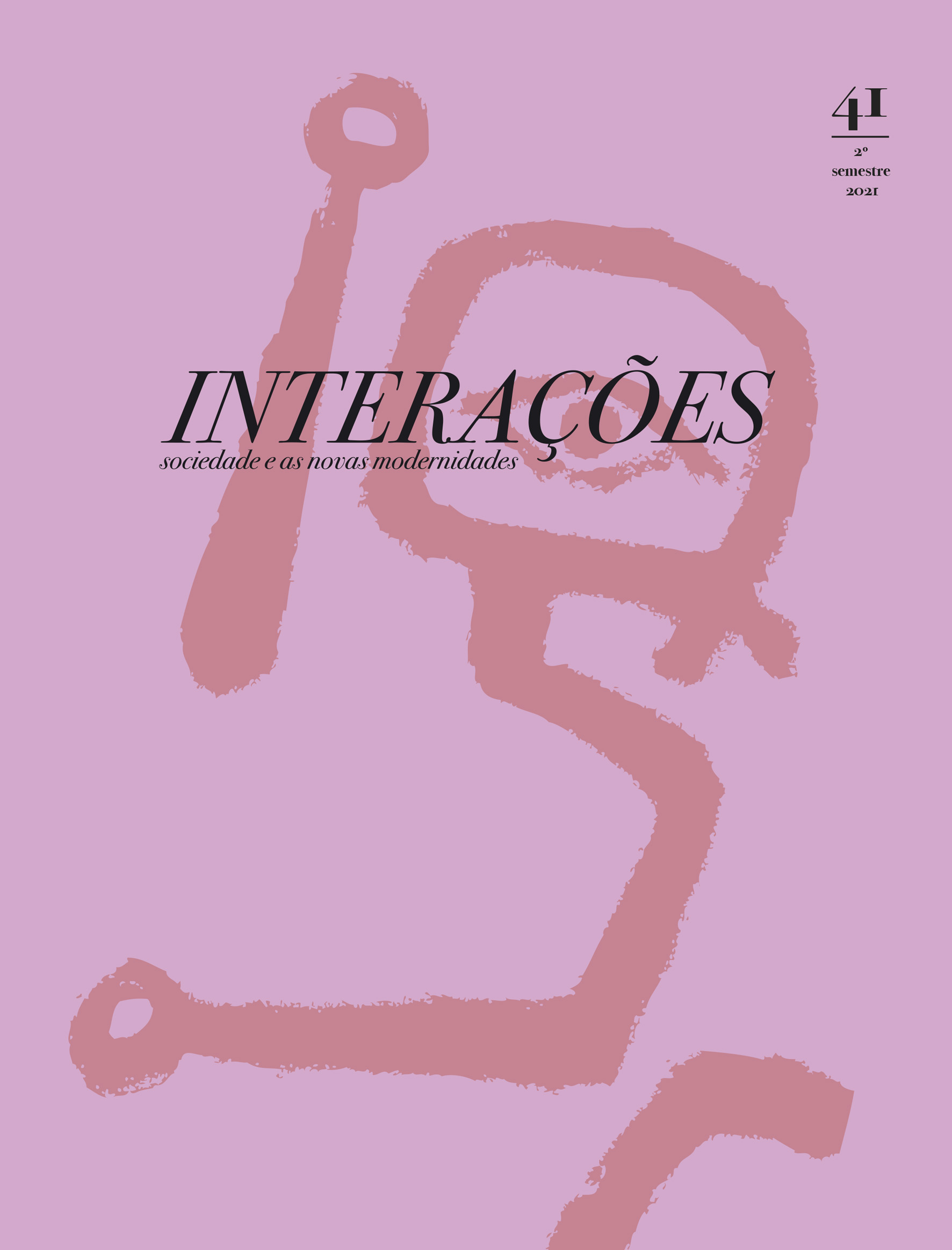White Fang Ally: The Arctic As Eden of Death in 30 Days of Night
DOI:
https://doi.org/10.31211/interacoes.n41.2021.a1Palabras clave:
30 Days of Night, Vampiros, Ártico, Gótico, Horror, HeterotopíaResumen
Aliado a colmillo blanco: el Ártico como el Edén de la muerte en 30 días de la noche
La debilidad congénita recurrente de los vampiros en la televisión, la literatura y el cine de los siglos XX y XXI es su susceptibilidad porfía a la radiación ultravioleta. El problema con la luz solar es fundamental para la vida continua de los no-muertos de los vampiros. De esta manera, entornos sin sol como el Ártico y la Antártida, representan lo que describo como entornos puramente góticos, en cuya desolación, frío y oscuridad, la vida de los no-muertos puede proliferar sin estropearse y sin obstáculos por los típicos ciclos de luminosidad diurna/nocturna que perturban la vida, vidas no-muertas de vampiros. Para teorizar el valor del Ártico como encarnación del horror gótico, este artículo utiliza "30 días de noche" (2002) de Steve Niles y Ben Templesmith como un estudio de caso de las patéticas resonancias entre el Ártico y la figura del vampiro. A continuación, el análisis se dirige al concepto de heterotopía de Michel Foucault para teorizar la forma en que el Ártico, cuyos ritmos nocturnos/diurnos se oponen radicalmente a la mayoría de los ciclos estacionales en otras partes de la tierra, representa un fenómeno onto-existencial, paraíso de la muerte para los no-muertos: un concepto que encarna los atributos esenciales de la condición onto-existencial de los no-muertos.
Descargas
Citas
Barker, C. (2002). Cold blood [Introdution]. In S. Niles, & B. Templesmith, 30 Days of Night. IDW Publishing.
Bloom, C. (2010). Gothic Histories: The Taste for Terror, 1764 to Present. Continuum International Publishing Group.
Cohen, J. J. (1996). ‘‘Monster Culture: Seven Theses. In Jeffrey Jerome Cohen (Ed.), Monster Theory: Reading Culture (pp. 3–25). University of Minnesota Press.
De Vore, D., Domenic, A., Kwan, A., & Reidy, N. (n.d). The Gothic Novel. [Webarchive]. https://web.archive.org/web/20110413003858/http://cai.ucdavis.edu:80/waters-sites/gothicnovel/155breport.html. Accessed 2 Sept. 2018.
Estok, S. C. (2011). Ecocriticism and Shakespeare: Reading Ecophobia. Palgrave Macmillan.
Foucault, M. (1984). Of Other Spaces: Utopias and Heterotopias (Jay Miskowiec, Trans.). Architecture /Mouvement/Continuité (Octobre).
Hicks, M. P. (2018). The Horror Book Review Digest, Vol 1. High Fever Books. Hillard, T. J. (2009). ‘Deep Into That Darkness Peering’: An Essay on Gothic Nature.
Interdisciplinary Studies in Literature and Environment, 16(4), 685-695.
Hillard, T. J. (2013). From Salem Witch to Blair Witch: The Puritan Influence on American Gothic Nature. In Andrew Smith & William Hughes (Eds.), EcoGothic, (pp. 103-119). Manchester University Press.
Khair, T. (2009). The Gothic, Postcolonialism and Otherness: Ghosts from Elsewhere. Basingstoke: Palgrave.
Koenig-Woodyard, C. (2018). The Mathematics of Monstrosity : Vampire Demography in Richard Matheson’s I Am Legend. University of Toronto Quarterly, 87(1), 81- 109.
Mackenzie, L., & S. Posthumus. (2013). “Reading Latour Outside: A Response to the Estok-Robisch Controversy.” Interdisciplinary Studies in Literature and Environment, 20(4), 757-777.
Matheson, R. (1995). I Am Legend. Tom Doherty. (Original work published 1954).
Merola, N, M. (2014). ‘For terror of the deadness beyond’: Arctic Environments and Inhuman Ecologies in Michelle Paver’s Dark Matter.” Ecozon@, 5(2), 22-40.
Morton, T. (2010). “The Dark Ecology of Elegy.” In Karen Weisman (Ed.), The Oxford Handbook of Elegy, (pp. 251-271). Oxford University Press.
Niles, S., & Templesmith, B. (2002). 30 Days of Night. IDW Publishing.
Philips, D. (2003). The Truth of Ecology: Nature, Culture, and Literature in America. Oxford University Press.
Shelley, M. W. (1823). Frankenstein: Or, the modern Prometheus, (2 vols, 2nd ed.). G. and W. B. Whittaker.
Smith, B. (2017). Environmental Dangers in the Tundra. Sciencing, https://sciencing. com/environmental-dangers-tundra-23668.html. Accessed 2 Sept. 2018.
Taylor, M. A. (2012). “The Nature of Fear: Edgar Allen Poe and Posthuman Ecology.” American Literature, 84(2), 353-379.
Thacker, E. (2011). In the Dust of This Planet: Horror of Philosophy, Vol. 1. ZeroBooks.
Trexler, A. (2012). Novel Climes: Anthropocene Histories, Hans-Jörg Rheinberger’s Trace, and Clive Cussler’s Arctic Drift. The Oxford Literary Review, 34(2), pp. 295–314.
Trexler, A., & Johns-Putra, A. (2011). Climate Change in Literature and Literary Criticism. Wiley Interdisciplinary Reviews: Climate Change [Online], pp. 185- 200. http://onlinelibrary.wiley.com/doi/10.1002/wcc.105/abstract
Veland, S., & A. H. Lynch. (2016). Arctic ice edge narratives: scale, discourse and ontological security. Area, 49(1), 9-17.
Descargas
Publicado
Cómo citar
Número
Sección
Licencia
Derechos de autor 2021 Kwasu David Tembo

Esta obra está bajo una licencia internacional Creative Commons Atribución-NoComercial 4.0.
Los derechos de autor de las obras publicadas son retenidos por el autor que otorga a Interações el derecho de publicación original. El artículo publicado se puede utilizar libremente con fines educativos, no comerciales, de acuerdo con la Licencia Creative Commons - Atribución-NoComercial 4.0 Internacional, siempre que el autor, el título del artículo, el título y el número de la revista sean citado junto con la URL o DOI del artículo.



